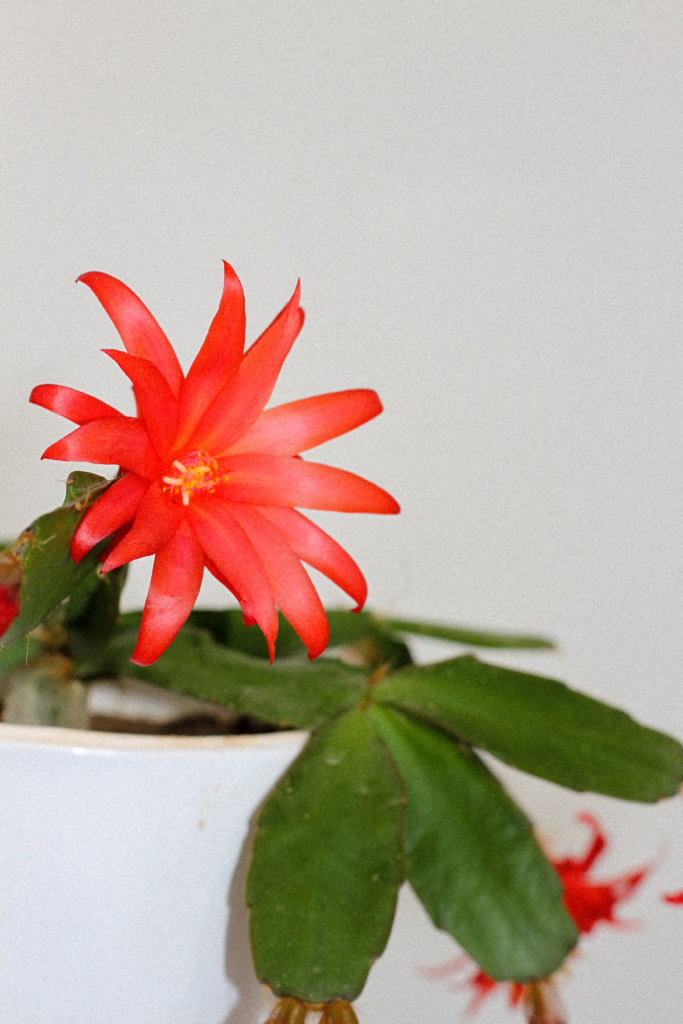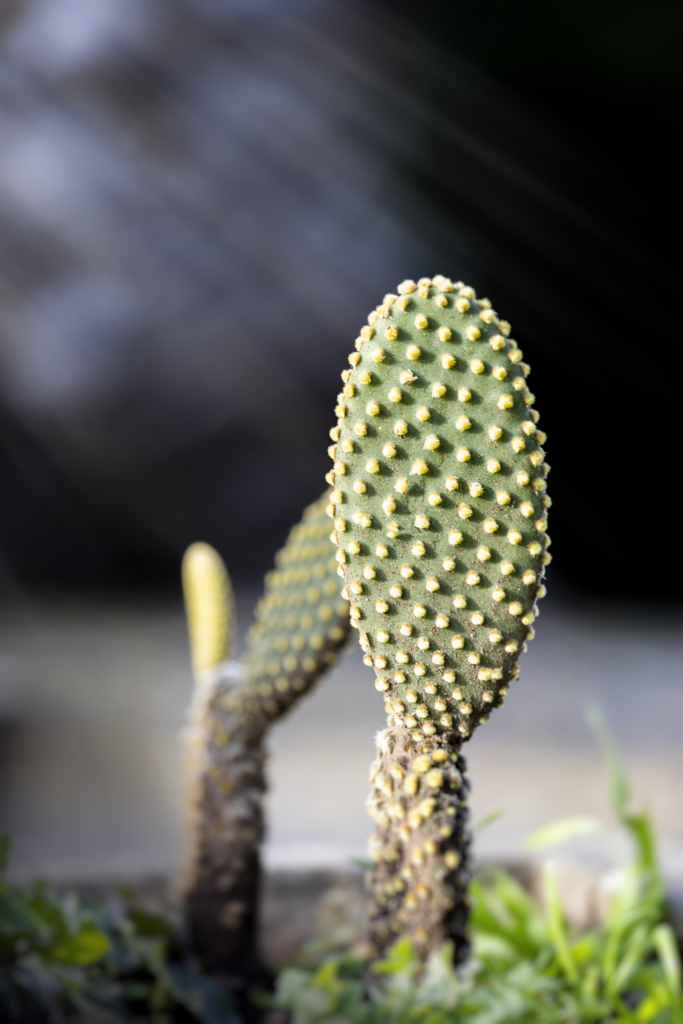Growing cactuses can be a fun and rewarding experience for any plant lover. These unique plants have adapted to survive in the harshest of environments, making them a great addition to any home or garden.
In this article, we will discuss the various aspects of growing cactuses and how to care for them to ensure they thrive.
A cactus is a unique plant in the landscape of plants due to its different structure from the classic plant structure – which includes a stem, branches and leaves.
This unique structure gives it high resistance in conditions of extreme dryness and heat through a number of techniques:
reducing the surface area that comes in contact with the air in order to reduce water evaporation that is achieved due to the giving up of the leaves, water storage in fleshy tissue – for future use in times of dryness.
Another technique that is not related to the external structure of the cactus is expressed in the division of the stages of photosynthesis of the cactus into day and night
At night the cactus stores carbon dioxide by opening the leaves, which would cause a lot of water loss if it were done during the day.
During the day the carbon dioxide is converted to sugar with the help of sunlight and keeps the peonies closed and prevents water loss through them.
Watering:
Although the cactus is known by Westerners as one that grows undisturbed in the arid desert, it will also be happy in your home for regular watering, but of course – in moderation.
First, you must take care of high-quality and not too sealed soil that will allow drying of excess water to prevent rotting, since the cactus is sensitive to excess water.
The soil should be mixed with sand, perlite or pumice to create a gritty texture that helps prevent water retention. In the summer you can water once a week and, in the fall, once every two weeks.
While in the winter, a cactus that grows in the garden should not be watered at all, while a cactus that grows at home should maintain a reasonable humidity in the soil.

Light and temperature:
The cactus is a desert plant and therefore likes a lot of sunlight, so if you place the cactus indoors, make sure that it is lit most of the day and plant it in a pot made of a material or color that does not heat up to prevent damage to the root system.
Place the cactus near a south-facing window or under a growing light.
Also, young cacti with a delicate root system will prefer more shade at the beginning of their growth. If the cactus is planted in the garden, it should be placed in as bright a place as possible.
Outdoor cactuses should be placed in a spot that receives at least six hours of direct sunlight a day. While cactuses are known for their ability to withstand extreme temperatures, it is important to note that they do not tolerate frost. During the winter months, bring outdoor cactuses indoors.
Fertilization:
Fertilize your cactuses once a month during the growing season (spring and summer) with a cactus-specific fertilizer. Avoid fertilizing during the winter months, as the plant is dormant and does not require additional nutrients.


Pests:
Common pests that can affect cactuses include spider mites (This insect creates webs and white spots on the leaf that may interfere with the photosynthesis process and also encourage infection with leaf diseases), mealybugs, and scales.
Regularly inspect your cactuses for signs of pest infestation, such as webbing or white spots on the leaves.
If you notice any pests, treat the plant with an insecticidal soap or oil spray.
Propagation:
Cactuses are relatively easy to propagate and can be grown from cuttings.
Propagate from seeds:
If you want to grow a cactus from scratch, you can start by collecting seeds from a mature cactus. Sow the seeds in a well-draining potting mix, keep the soil moist but not waterlogged, and place the pot in a warm, bright spot.
Depending on the species, the seeds may germinate in a few days or several weeks.
Once the seedlings have developed several true leaves, you can transplant them to their own pots.
Propagate from cuttings:
If you have a mature cactus that has grown too big for its pot, you can propagate it by taking cuttings. Use a sharp, clean knife to cut off a piece of the stem or a branch.
Let the cutting dry in a shaded spot for a few days to allow the wound to callus over.
Then, plant the cutting in a well-draining potting mix, burying the bottom third of the cutting in the soil.
Water sparingly and place the pot in a bright, warm spot. With time, the cutting will develop roots and grow into a new cactus.
Propagate by division:
Some cacti, such as the prickly pear, can be propagated by dividing the plant.
Carefully remove the cactus from its pot and gently pull apart the individual segments, making sure each segment has some roots attached. Plant each segment in its own pot with well-drained soil, water sparingly, and place in a bright, warm spot. Each segment should develop into a new cactus.
Below are some of the most common types of cacti to grow in a garden:
This cactus has a rounded, barrel-shaped body covered in golden spines.
It produces yellow flowers in the spring and requires well-drained soil and full sun.

This type of cactus is known for its flat, round pads and colorful flowers. They are also edible, and the pads can be used in cooking.

Hedgehog cactus:
These cacti have cylindrical bodies covered in spines and are known for their bright pink or yellow flowers.

Saguaro cactus:
These iconic cacti are tall, columnar, and can live up to 200 years old. They require a lot of sunlight and well-drained soil.

Christmas cactus:
These cacti bloom during the holiday season and have colorful flowers in shades of red, pink, and white.

Fishhook cactus:
These small cacti are named after their curved spines that resemble fishhooks. They are drought-tolerant and can survive in hot, dry conditions.

Also known as the polka-dot cactus, this type of cactus has flat, round pads covered in white dots and spines. It produces yellow flowers in the spring and requires partial shade and well-draining soil.

Lace cactus:
This cactus has thin, lace-like foliage that grows in a rosette shape. It produces small, white flowers in the spring and requires well-drained soil and partial shade.

Mammillaria cactus:
This is a large genus of cacti that includes many different species. They come in a range of sizes and shapes, but are generally small and round with spines covering their bodies. They produce colorful flowers in the spring and require well-draining soil and full sun.

You might also like these articles:
- 10 high rated tillers for small/medium yard reviews
- 10 Popular Lawn Fertilizers: A Review of Top Options Based on Ag Website Reviews
- 5 Popular watering computers review
- A Plant’s Nutritional Needs: The Best Fertilizer for Each Stage of Plant Growth
- Carrots growing guide
- Choosing the Perfect Fertilizer for a Lush Turf
- Creating a Beautiful and Low-Maintenance Shaded Garden
- Decoding Plant Language: What Your Leaves Are Trying to Tell You
- Desert Wonders: Cultivating Beautiful Cactuses
- Drip Irrigation: The Smart Way to Water Your Plants – A Comprehensive Guide
- Easy steps to grow tomatoes
- Effective Control Methods for Japanese Beetles and Grubs in Your Garden





